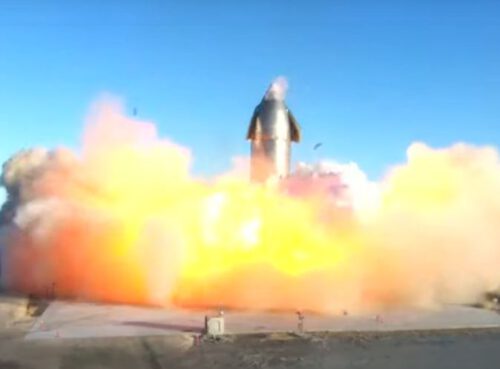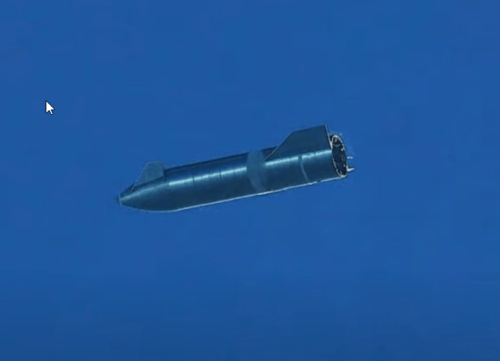SN8, a prototype of a spacecraft that is supposed to transport humans to Mars, took off and even circled in the air but did not succeed in the landing phase apparently due to low fuel pressure in the central tank, which caused it to reach the ground at too high a speed. The experiments will continue with the next spacecraft
By Universe Today, translation: Avi Blizovsky

Finally, SpaceX has made the first high-altitude test flight with the Starship spacecraft prototype. During the launch, the eighth version of the prototype soared to an altitude of 12.5 km and performed several fancy maneuvers before returning to its lander. Unfortunately, the landing was difficult and SN8 disintegrated upon landing in front of cameras that broadcast the operation live.
Although it failed to make it home in one piece (technically it did land and only then exploded), SpaceX approved the design of its spacecraft for high-altitude flight, an experiment that is a major springboard in the development of any spacecraft. Moreover, the data they collected from this test and the failed landing are already being used to prepare for the next flight test at a much higher altitude, so it can be said that lessons can be learned from it in preparation for making regular flights to the moon and Mars.
On Tuesday, a launch attempt was canceled at the last minute due to fear of an engine malfunction, a shutdown procedure that was carried out automatically. The launch was postponed until yesterday (Wednesday 15:00 Central USA time - 23:00 Israel time) but again the launch was canceled at the last minute about two minutes before the planned launch. This time the cancellation was made by the members of the control staff due to a plane that entered the launch area that was supposed to be free. In the end, after all the delays, the launch took place at 16:45 local time, 00:45 Israel time tonight (Thursday).

The launch was smooth
The launch began without incident when all three "Raptor" engines were ignited and the spacecraft slowly took off after the launch. SpaceX shared the entire event live on social media using an external camera, a downward-facing camera mounted on the exterior of the spacecraft, and a third camera mounted inside the engine bay.
About 4:42 minutes into the flight, the SN8 reached the target altitude of 12.5 km and the Raptor's engines shut down. The SN8 continued to climb a bit and then began to descend, tilting its body towards the ground. It was an expected "tummy flip" maneuver, which tested the spacecraft's maneuvering racks and aerodynamic surfaces.
The SN8 performs its "belly flipper" maneuver. Credit: SpaceX
The spacecraft glided through the air for over a minute and made most of the way back to the lander. Ground crews reignited all three Raptor engines (6:25 minutes after launch) to slow SN8 in preparation for a soft landing.
Unfortunately, SN8 was engulfed in flames immediately after landing 6:42 minutes after launch and then quickly exploded. With the exception of the external camera, all live video feeds were abruptly cut off and after a few seconds, the smoke cleared to reveal a small pile of debris and the spacecraft's nose strewn across the surface. The live broadcast ended with the message: Amazing experiment, congratulations spaceship. Next SN9!”
"Elon Musk took to Twitter about 10 minutes after the flight ended. He praised the successes achieved by the company during the experiment, which included a successful takeoff and accurate landing control."

He also explained the reason why SN8 exploded immediately after reaching the landing: “The fuel tank pressure was low during landing which caused a high speed at the moment of touching the ground which caused the RUD, but we have all the data we needed! Congratulations SpaceX Team”
RUD is a technical term in aerospace engineering that means "Rapid Unplanned Dismantling", however, Musk is certainly right and there are many reasons why SpaceX is feeling celebratory right now except for arriving too quickly and burning up on the landing pad, SN8 managed to achieve everything it was supposed to on a test flight this.
Reaching an altitude of 12.5 km, she was able to successfully soar through the atmosphere using only her fins and surfaces, and was able to reignite its engine just in time to flip over and land. As for the landing part, Musk and his engineers now have to look at the data to make sure the next test flight will have more time to slow down.
More of the topic in Hayadan:
